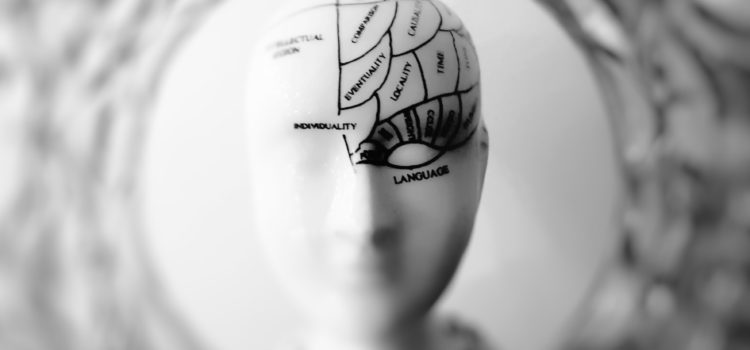

This article gives you a glimpse of what you can learn with Shortform. Shortform has the world’s best guides to 1000+ nonfiction books, plus other resources to help you accelerate your learning.
Want to learn faster and get smarter? Sign up for a free trial here .
Do you need help retaining or recalling information? What are the best memory improvement tips that will keep your mind as sharp as ever?
If you’re always using the excuse, “My memory isn’t what it used to be,” just know that it doesn’t have to be that way. There are plenty of tips and tricks to keep your memory in tip-top shape.
Whether you want to memorize your credit card information or remember your doctor’s appointment, these memory improvement tips will help you out.
1. Avoid Distractions and Multitasking
In Learning How to Learn, Barbara Oakley and Terrence Sejnowski note that your brain has two different types of memory: working memory and long-term memory.
Your working memory resides in your prefrontal cortex (the part of your brain just behind your eyes). It holds whatever you’re actively thinking about at the moment, and tends to drop any neural connections that go unused for more than about ten seconds. On average, it can only hold about four ideas (or active chains of synapses) at once.
On the other hand, your long-term memory resides in your cerebral cortex (the outer part of your brain), although the synapse chains for long-term memories initially form in your hippocampus. It can hold an unlimited amount of information and ideas and store them indefinitely, but to think about any of them, you have to load them into working memory.
Oakley and Sejnowski’s recommended memory improvement tip is to avoid distractions and multitasking, which works for both types of memory.
How to Avoid Distractions
Oakley and Sejnowski say you need to eliminate distractions while you’re trying to retain information. Distractions tie up some of the limited capacity of your working memory. Since you learn and master concepts by connecting ideas in working memory, reducing the amount of working memory that you have available will slow down this process.
Thus, the authors recommend that when focusing on a task, you might, for example, silence your cell phone, turn off the TV, find a quiet place, or set aside a certain time block so you can tell other people not to disturb you during that time.
How to Avoid Multitasking
The authors also recommend avoiding multitasking. When you work on multiple tasks in parallel, you are constantly shifting your focus from one to the other. Every time you switch from one task to the other, your brain has to clear your working memory and load different information into it. This takes mental energy, so the more you multitask, the more you wear yourself out mentally.
2. Get Better Sleep
Why We Sleep by Matthew Walker notes that sleep loss may contribute to memory loss or Alzheimer’s through a few mechanisms:
- Frontal lobe degeneration—especially through Alzheimer’s characteristic amyloid plaques (clumps of toxic protein that poison neurons)—disrupts NREM sleep.
- Lack of NREM sleep disrupts memory formation, a key symptom of Alzheimer’s. (Notably, the hippocampus, the part of the brain associated with memory, is not affected by amyloid plaques. This presents a conundrum to scientists on why memory is disrupted in Alzheimer’s.)
- Lack of NREM sleep disrupts the glymphatic cleanup system, a process that typically shrinks glial cells besides neurons during sleep to more effectively clear out amyloid plaques. Sleep loss precedes Alzheimer’s by several years, suggesting this could be an early diagnostic.
It’s easy to see how a vicious cycle can occur—frontal lobe degeneration disrupts NREM sleep, which causes further frontal lobe degeneration. Walker suggests that encouraging NREM sleep, through artificial brain stimulation if needed, might be therapeutic for Alzheimer’s. It could also be preventative, in the same way that cholesterol-reducing drugs protect against heart disease.
How to Get Better Sleep
Walker provides several strategies on how you can start getting better, less interrupted sleep as a memory improvement tip:
- Keep the same waking and sleeping time each day. Erratic sleep schedules disrupt sleep quality.
- Practice sleep hygiene—lower bedroom temperature, reduce noise, reduce light.
- Avoid alcohol, caffeine, exercise, or long naps before sleep.
- Get some exercise, which may increase total sleep time and increase the quality of sleep. Exercising has more of a chronic effect, meaning it helps in the long run and doesn’t take effect on a day-to-day scale—exercise on one day doesn’t necessarily lead to better sleep that night. But worse sleep on one night does lead to worse exercise the following day.
- Eat a normal diet (not severe caloric restriction of below 800 calories per day). Avoid very high-carb diets (>70% of calories) since this decreases NREM and increases awakenings.
- Avoid sleeping pills—they’re no better than a placebo.
- For those with insomnia, try cognitive behavioral therapy, which is more effective than sleeping pills.
3. Image-Based Association
A fundamental memory improvement tip involves remembering sequences of information using image-based association. According to Harry Lorayne and Jerry Lucas’s The Memory Book, we always use association to commit things to memory, often subconsciously. In other words, we remember things in relation to each other, meaning we can recall anything if we link it to another piece of information we already know.
The following steps will show you how to use your brain’s natural affinity for associations to connect sequential pieces of information, enabling you to remember a full list of words in their original order.
Step 1: Start With a List of Words
To practice this technique, you’ll first need a list of words. These can be anything, but Lorayne and Lucas suggest that nouns and verbs work best because they’re the easiest to picture. Your list can be as long or as short as you want it to be. For example, we’ll start with five words: moon, pencil, coffee, running, and cloud.
Step 2: Create a Strange Mental Image Connecting the First Two Words
Once you have your list, Lorayne and Lucas instruct you to begin memorizing the list by connecting the first two words. Do this by creating a mental image that associates the two words, specifically an image that’s illogical, strange, or silly.
This association technique takes advantage of your brain’s visual-based memory and its tendency to remember unusual things. Coming up with a silly, illogical image also prompts you to consider the information closely, creating your foundational memory of it. The clearer you imagine your strange or silly association image, the more strongly you’ll commit it to memory.
Furthermore, Lorayne and Lucas suggest incorporating action into your mental image, as actions are easier to remember than static pictures. For instance, to create your association for the first two words on our example list from Step 1—moon and pencil—you might imagine that the moon has grown arms and is waving around a giant pencil.
Step 3: Form Connections Between All of the Words
After creating your association image between the first two words in the list, repeat Step 2 with the rest of the words. The authors state that the second word must be associated with the third, the third with the fourth, and so on.
For example, returning to our example list of words, your next task would be to create a silly mental image associating pencil with coffee. You might picture brewing a cup of coffee with pencil shavings instead of coffee grounds. Then, you’d associate coffee with running. Maybe you’d imagine a cup of coffee with legs running away from you when you try to drink it. Finally, you’d imagine something that connects running with cloud. This could be a runner who’s made out of clouds or someone running in the sky on a path of clouds.
You can repeat this step for a list of any length, as long as you take the time to form a clear, strange, and dynamic mental image between each pair of items on the list.
Step 4: Practice Frequently
Use the above steps to remember items in any list in their correct order by simply following your image associations down the list. According to Lorayne and Lucas, the best way to make the most of this memory improvement tip is to practice it frequently.
Try creating your own list of words and developing original associations between them. Practice recalling the list in the correct order. As you exercise your imagination over time, it’ll become easier to create silly mental pictures, and your recall will require less effort.
4. Chunking
According to Barbara Oakley in A Mind for Numbers, another helpful memory improvement tip is the chunking technique. Chunking is a “bottom-up” learning process because it starts with the details and progresses towards the big picture: First, you take in the information. Then you connect the information by understanding the underlying concept.
Finally, once the information is unified into a chunk, you establish the context of the chunk, so your memory can file it where it will be most relevant. The more you understand why something works, the more intuitively you can understand how it works. Understanding whether or not the chunk is applicable in a variety of different situations also establishes multiple neural pathways to it, making it accessible when you need it.
As a practical example, suppose you have just learned a new problem-solving technique in one of your classes. Follow these steps to make sure the new technique is strongly chunked in your memory:
Step 1: Work through a representative problem, ensuring you understand each step’s purpose.
Step 2: Work on the same problem again. Repetition is important for the learning process.
Step 3: Switch to diffuse-mode thinking by taking a break.
Step 4: Work on the same problem again before going to bed.
Step 5: Get some sleep.
Step 6: Work on the same problem again as soon as possible after you wake up.
Step 7: Go for a walk or do something physically active and mentally review the key steps involved in the problem while you walk.
Repeat these steps for other problems to further strengthen the chunk and build context. However, you only need to do this for a few key problems, not for every problem that your professor assigns as homework.
Build Context for Chunks With Top-Down Learning
Chunking is a bottom-up learning process, but top-down learning also contributes to building up your brain’s library of chunks. Top-down learning follows a similar sequence to the chunking process but from the opposite direction: First, you learn the context in which a concept applies, then you learn the concept, and finally you flesh out the concept with detailed information. In other words, you progress from the big picture down to the details.
For example, skimming a book or chapter before you read it in detail allows your mind to organize your expectations of what you will be learning before you fill in the details of each new concept. This is analogous to building a mental filing cabinet with a separate drawer for your brain to file each new piece of information when you go back and read it in detail. You can absorb information better when your brain already has a place to put the chunk or an existing chunk to append it to.
Whenever possible, use top-down learning to keep your mental library of chunks organized, but be prepared to do some bottom-up chunking when you dig into the details or begin applying a new problem-solving strategy. You can’t learn math and science without using both top-down and bottom-up learning.
5. The Major System and PAO
Numbers are some of the hardest things to memorize, whether it’s your Social Security number, credit card information, or a locker combination code. There are several, ever-evolving systems for memorizing numbers. Moonwalking With Einstein by Joshua Foer discusses two methods for his memory improvement tip: the Major System and PAO. The Major System is useful for things like phone numbers and credit cards, but to do the kind of heavy lifting required for international memory competitions, you’ll need to use PAO.
Major System
The “Major System” was invented by Johann Winkelmann and is a code for translating numbers into words, and then into images. Here are the steps:
- Learn the code. Each number has a letter or choice of two letters assigned to it:
- 0=S
- 1=T/D
- 2=N
- 3=M
- 4=R
- 5=L
- 6=Sh/Ch
- 7=K/G
- 8=F/V
- 9=P/B
- Transform numbers into sounds.
- Example #1: 05=SL.
- Example #2: 3928=MPNV
- Transform the sounds into words. You can add as many vowels as you need for sense, and you can transform multi-digit numbers into multiple words.
- Example #1: SL becomes “sail.”
- Example #2: MPNV becomes “map Nevada.”
- Transform the words into images.
- Example #1: The word “sail” becomes an image of a brightly colored spinnaker sail.
- Example #2: “Map Nevada” becomes an image of a map of Nevada.
- Put the images into a memory palace.
PAO (person-action-object)
In the PAO system, instead of assigning letters to single-digit numbers, you assign an image of a person acting on an object to every two-digit number. This system generates some bizarre (and therefore memorable) images. Here are the steps:
- Come up with an image of a person acting on an object for every whole number between 00 and 99. You can use whatever images are memorable to you, though mnemonists suggest not including your family members if your actions are especially lewd, because you’ll have to picture the images.
- Example #1: 45 is Tiger Woods putting a golf ball.
- Example #2: 78 is Brittney Spears singing into a microphone.
- Example #3: 89 is the queen of England scratching her armpit.
- Chunk long numbers into six-digit groups.
- For example, if you had to memorize a 12-digit number such as 457889897845, you’d break it into two groups, 457889 and 897845.
- Combine the person from the first two digits with the action from the second two digits and the object from the last two digits.
- For example, 457889 is Tiger Woods (45’s person) singing (78’s action) into an armpit (89’s object); 894578 is the queen of England putting a microphone. Instead of remembering the 12 digits, all you have to remember is the two images.
- Place each image in your memory palace. The best mnemonists place multiple images in a single location.
- For example, together in the shower, Tiger Woods might be singing into an armpit and the queen might be putting her microphone.
While you have to come up with a person, action, and object for many numbers, once you have the images memorized, you have a built-in system for creating an image for any number between 0 and 999,999.
Final Words
As you get older, these memory improvement tips will become especially helpful. Over time, you won’t even realize that you’ve been using them. They’ll become a part of your daily routine, and your memory will thank you for it.
What are other memory improvement tips that are useful? Let us know your suggestions in the comments below!

Want to fast-track your learning? With Shortform, you’ll gain insights you won't find anywhere else .
Here's what you’ll get when you sign up for Shortform :
- Complicated ideas explained in simple and concise ways
- Smart analysis that connects what you’re reading to other key concepts
- Writing with zero fluff because we know how important your time is






